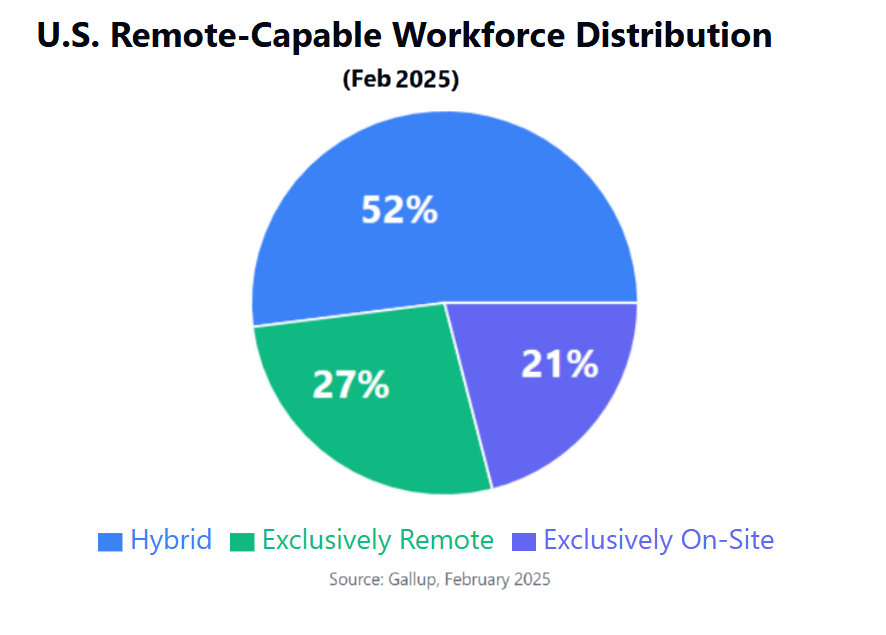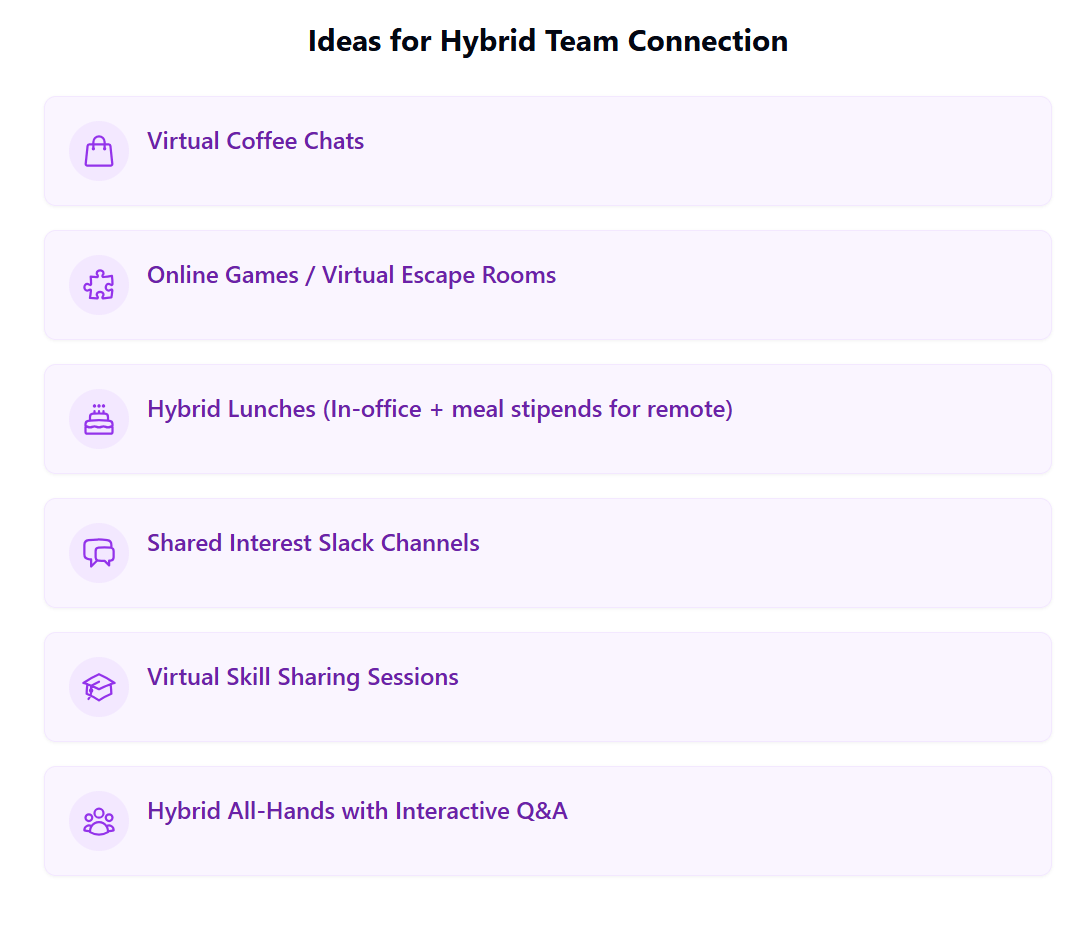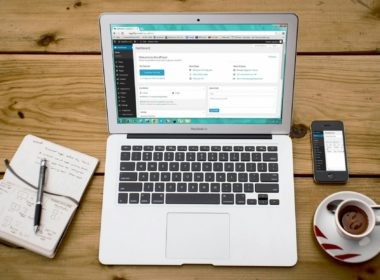Hybrid work is no longer an experiment; it’s the established reality for a significant portion of the workforce in 2025. Data from Gallup in early 2025 shows that 52% of U.S. remote-capable employees operate under a hybrid model, with another 27% fully remote. This shift is strongly driven by employee preference, with 60% preferring a hybrid arrangement. Furthermore, hybrid and remote roles continue to attract a disproportionate share of applicants, highlighting flexibility’s power in the talent market.
While the benefits – including improved retention rates and access to wider talent pools, often with no loss in productivity – are compelling, success isn’t automatic. Mastering hybrid work requires a strategic approach that balances flexibility with collaboration, maintains a cohesive culture, leverages technology effectively (including emerging AI tools), and proactively addresses potential pitfalls.

This guide outlines prioritized best practices for building and sustaining a high-performing hybrid model in 2025.
Foundational Pillars: The Non-Negotiables
Think of these as the essential building blocks. Getting these right is critical before optimizing further.
1. Intentional Design & Clear Policy
Don’t let your hybrid model simply “happen.” Design it with purpose.
- Define the ‘Why’: Clearly articulate why certain roles or tasks benefit from in-office time versus remote work. Avoid mandating office presence unless there’s a clear collaborative or cultural purpose.
- Co-Create Guidelines: Involve employees in developing the framework. Define scope (who is eligible?), expectations (core hours and communication expectations), and the process for requesting/approving arrangements.
- Document Everything: Create a living hybrid work policy or playbook. (Self-help: Numerous templates exist online; search for “hybrid work policy template” from sources like HR organizations or consultancies. Key areas to cover include eligibility, expectations, equipment, security, and communication protocols, similar to examples from QCOSS or guidance from Indeed).

2. Equitable Technology & Tools
Tech parity isn’t a perk; it’s essential for inclusion and productivity in hybrid environments.
- Core Stack: Ensure seamless access for everyone to communication platforms (Slack, Microsoft Teams), video conferencing (Zoom, Google Meet), project management (Asana, ClickUp, Trello), and shared document systems (Google Workspace, Microsoft 365).
- Budget-Conscious Solutions: Smaller organizations can leverage free or low-cost tiers of many tools (Slack Free, ClickUp Free Forever, Google Workspace Essentials Starter). Get creative with existing office space (e.g., quiet zones, repurposing rooms with basic webcams/mics) or explore partnerships with coworking spaces for occasional team gatherings.
- Leverage AI: It’s increasingly embedded in collaboration tools. Explore features like automated meeting summaries (Fireflies.ai, Otter.ai, Teams’ Copilot, Meet’s AI notes), smart replies/search in chat (Slack AI), and AI-assisted task management (ClickUp AI, Asana AI). Provide clear guidelines on ethical AI use.
- Support & Security: Offer equal IT support and robust security measures (VPNs, MFA) for all employees, regardless of location.
3. Transparent Communication Norms
Ambiguity is the enemy of hybrid work.
- Establish Protocols: Define preferred channels for different types of communication (e.g., chat for quick questions, email for formal updates, project tools for task status). Set reasonable response time expectations.
- Prioritize Asynchronous: Lean heavily on asynchronous communication (where immediate responses aren’t required) to respect different schedules and time zones, and enable focused work. Document decisions and discussions thoroughly in shared spaces.
- Real-World Example: Look at companies like GitLab, which operates with an asynchronous-first mindset, extensively documented in their public handbook. (Consider creating a simple table for your team comparing synchronous tools like video calls for urgent problem-solving vs. asynchronous tools like shared docs or dedicated chat channels for status updates and non-urgent Q&A.)
Choosing the Right Communication Method: Sync vs. Async:
| Communication Type | Common Tools | Best Use Cases for Hybrid Teams |
|---|---|---|
| Synchronous (Real-time) | Video Calls (Zoom, Teams, Meet), Phone Calls, In-Person Meetings | Urgent problem-solving, complex discussions requiring immediate back-and-forth, team building, sensitive conversations, final decision-making meetings. |
| Asynchronous (Non-real-time) | Email, Chat/Messaging (Slack, Teams channels), Shared Docs (Google Workspace, Notion, Confluence), Project Management Tool Updates (Asana, Jira), Recorded Videos (Loom) | Status updates, sharing information/announcements, non-urgent questions, document collaboration/feedback, requests requiring thought/research, bridging time zones. |
4. Trust-Based Leadership & Outcome Focus
Hybrid work thrives on trust, not surveillance.
- Manage by Outcomes: Shift performance evaluation from visible activity or hours logged to results achieved against clear goals (e.g., OKRs).
- Empower Autonomy: Give employees control over managing their schedules within established guidelines. Focus check-ins on progress, roadblocks, and support needs, not micromanagement.
Optimizing Collaboration & Culture
Once the foundations are solid, focus on enhancing how teams work together and stay connected.
5. Purposeful Office Time
Make the commute count.
- Design for Connection: Structure in-office days (“anchor days”) around activities that genuinely benefit from face-to-face interaction: strategic workshops, complex problem-solving, team building, onboarding, client meetings.
- Create Collaboration Hubs: Design office spaces that facilitate interaction – flexible meeting areas, project rooms, comfortable social zones – rather than just rows of desks for siloed work.
6. Inclusive Practices & Equity
Actively combat proximity bias (favoring those in the office).
- Hybrid Meeting Etiquette: Standardize practices like “video on,” using high-quality audio/video in meeting rooms, actively soliciting input from remote participants first, and avoiding “sidebar” conversations in the room.
- Equal Opportunity: Ensure remote employees have equitable access to projects, promotions, mentorship, and visibility with leadership. Evaluate performance objectively.
7. Fostering Connection & Belonging
Building culture requires deliberate effort when teams are distributed.
- Hybrid Socials: Organize inclusive team-building activities – virtual escape rooms, online games (Gather, Kumospace), or hybrid events where remote employees receive a care package or meal stipend to participate alongside in-office colleagues.
- Reinforce Values: Use all-hands meetings (with robust Q&A for all) and regular communications to reinforce company mission and values.
- Celebrate Milestones: Find hybrid-friendly ways to acknowledge achievements and personal milestones for everyone.

Continuous Improvement & Well-being
Hybrid models aren’t “set and forget.” They require ongoing attention.
8. Iterate with Data & Feedback
Treat your hybrid model as dynamic.
- Gather Feedback: Regularly use pulse surveys (SurveyMonkey, Google Forms, Typeform) to gauge employee satisfaction and identify pain points with the hybrid setup. Hold open discussions.
- Measure What Matters: Track key metrics like employee engagement (potentially higher for hybrid workers, per Gallup data), productivity trends (focusing on team/project outputs rather than individual activity), and retention rates (using data from HR platforms like BambooHR or Gusto). Note: If considering productivity monitoring tools (Toggl Track, Clockify), proceed with extreme caution, transparency, and employee consent, focusing on team-level insights for process improvement, not individual surveillance.
- Adapt: Be willing to adjust policies, tools, and schedules based on feedback and performance data. Pilot changes with specific teams before broad rollouts.
9. Prioritize Well-being
Flexibility can sometimes blur boundaries.
- Encourage Boundaries: Promote practices like setting clear working hours, taking regular breaks, and utilizing “right to disconnect” policies where applicable. Leaders should model this behavior.
- Provide Support: Offer resources for mental health and ensure both remote and in-office employees have access to ergonomic assessments and support.
Navigating Potential Challenges
Be prepared for common hybrid hurdles:
- Burnout/Blurred Boundaries: Mitigation: Encourage time-blocking, “no-meeting” periods, and leaders visibly logging off. Reinforce that flexibility isn’t 24/7 availability.
- Proximity Bias: Mitigation: Train managers on inclusive leadership, use objective performance metrics, ensure equitable distribution of opportunities, standardize hybrid meeting practices.
- Tech Fatigue/Overload: Mitigation: Rationalize the tool stack, provide adequate training, clearly define the purpose of each tool.
- Maintaining Cohesion/Culture: Mitigation: Intentional team-building (virtual & hybrid), regular all-hands, reinforcing shared values, creating informal connection opportunities.
- Policy Resistance: Mitigation: Communicate the “why” transparently, involve employees in policy design, use pilot programs to test and refine approaches.
Your Next Steps
Mastering hybrid work in 2025 is an ongoing journey, not a destination. Success relies on intentionality, prioritizing equity, fostering trust, embracing transparent communication, and committing to continuous adaptation. When implemented thoughtfully, hybrid models offer a powerful way to boost engagement, attract top talent, and drive performance.
Ready to refine your approach? Use this checklist to guide your next steps:
✅ Define/Review Purpose: Clarify why hybrid and why office time for your specific context.
✅ Audit Policy: Ensure your guidelines are clear, documented, and cover key areas (eligibility, expectations, security).
✅ Assess Tech Equity: Check if all employees have the necessary tools, support, and access (consider budget options & AI enhancements).
✅ Solidify Communication Norms: Define channels, set expectations, and champion asynchronous methods.
✅ Make Office Time Intentional: Plan in-person time around high-value collaboration.
✅ Promote Inclusivity: Implement hybrid meeting best practices and check for equal opportunities.
✅ Foster Connections: Plan deliberate activities to build team cohesion across locations.
✅ Focus on Outcomes: Ensure performance management is results-oriented and leadership is trust-based.
✅ Establish Feedback Loops: Set up regular surveys and check-ins to monitor and measure success.
✅ Prioritize Well-being: Encourage boundaries and provide support resources.
✅ Anticipate Challenges: Be aware of potential pitfalls and plan mitigation strategies.
Start Small: If you’re new to this or making significant changes, consider piloting your updated model with one or two teams first. Learn, adjust, and then scale. The future of work is flexible, and the organizations that adapt thoughtfully will lead the way.












